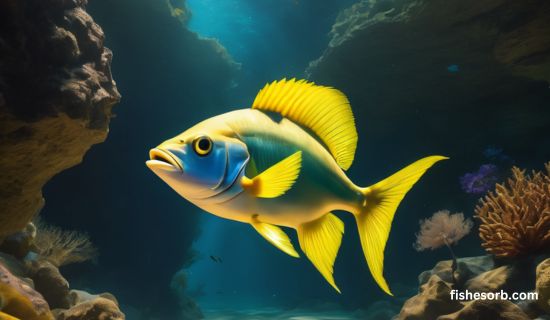Yellow Jack: A Comprehensive Guide
In this guide, we delve into the fascinating world of the Yellow Jack (Carangids Bartholomae), also known as Coolio, a captivating species of marine fish belonging to the jack family, Carangidae. From its taxonomy and distribution to its biology and relationship with humans, we uncover the intricacies of this remarkable fish.
Taxonomy and Naming
The Yellow Jack finds its place within the genus Carangids, a group commonly referred to as jacks and trevallies. This species, scientifically described by the renowned French taxonomist Georges Cuvier in 1833, boasts a rich history in taxonomic studies. Initially named Caranx Bartholomae, its classification within the genus has sparked debates among researchers. However, following the Fish base and ITIS classification, we recognize it as Carangids Bartholomae. Its common name, “yellow jack,” originates from the aging process, where its coloration transitions to a vibrant yellow hue.

Description
Characterized by a moderately deep, compressed elongate body, the Yellow Jack showcases distinct features typical of the Carangids genus. Its anatomy includes notable elements such as the upper jaw not reaching the interior margin of the eye and narrow bands of villiform teeth. With a maximum recorded length of 1 meter and a weight of 14 kilograms, this species commands attention. The dorsal and anal fins, adorned with spines and soft rays, contribute to its majestic appearance. Moreover, its coloration, ranging from pale yellow-green-blue dorsally to silver ventrally, adds to its allure.

Distribution and Habitat
The Yellow Jack roams the tropical to subtropical waters of the western Atlantic Ocean, extending from Massachusetts to Maceio, Brazil. Its habitat encompasses offshore reefs, islands, and open marine waters, favoring the sandy shallows of various Caribbean islands for foraging. While predominantly an offshore dweller, occasional sightings in inshore coastal waters highlight its adaptability.

Biology
As a predatory species, the Yellow Jack preys on small fish and occasionally ventures into benthic territories. Its foraging behavior, whether solitary or in groups, demonstrates versatility, with observations indicating opportunistic feeding strategies. Notably, its interactions with larger species and its role as both follower and followed underscore its ecological significance. Studies on its reproductive behavior reveal intriguing spawning patterns and juvenile dispersal mechanisms, shedding light on its life cycle.

Relationship to Humans
Commercially, the Yellow Jack holds minor importance, yet it remains a target for both commercial and recreational fishermen. Despite its fair to good table quality, caution is warranted due to its association with ciguatera toxins, particularly in the West Indies. Understanding its ecological role and the implications of ciguatera contamination is crucial for sustainable management practices.

In conclusion, the Yellow Jack stands as a testament to the biodiversity of the Atlantic Ocean, captivating researchers and enthusiasts alike with its remarkable traits and ecological interactions. As we continue to explore and appreciate its role in marine ecosystems, responsible stewardship remains paramount for its conservation and welfare.



